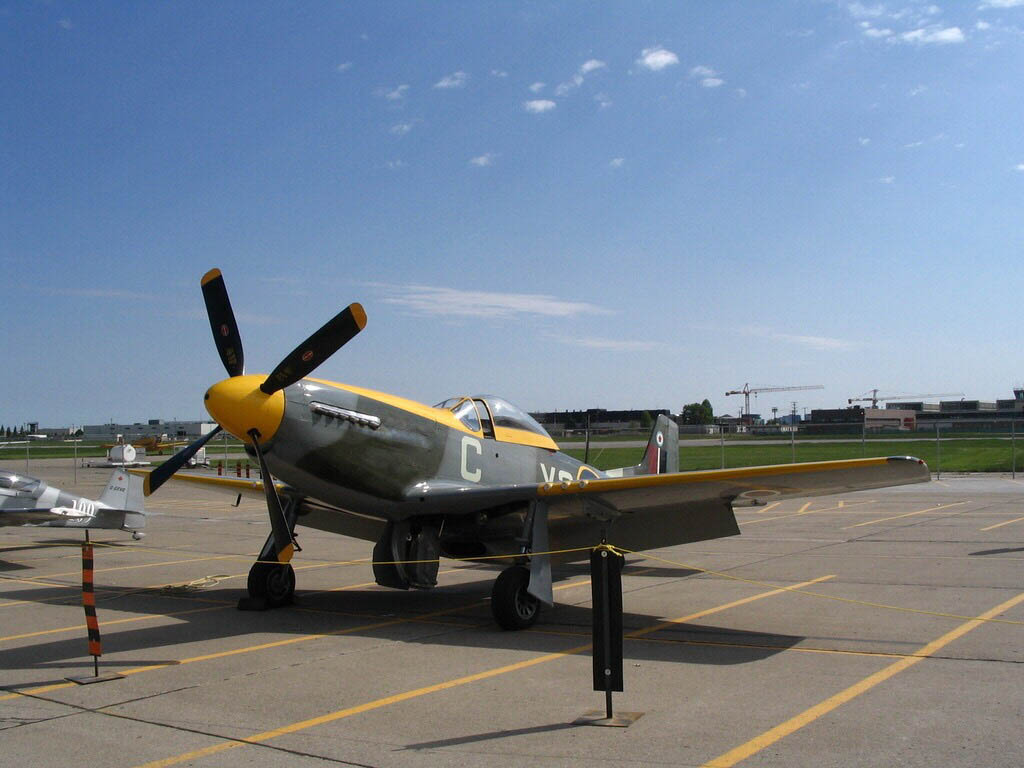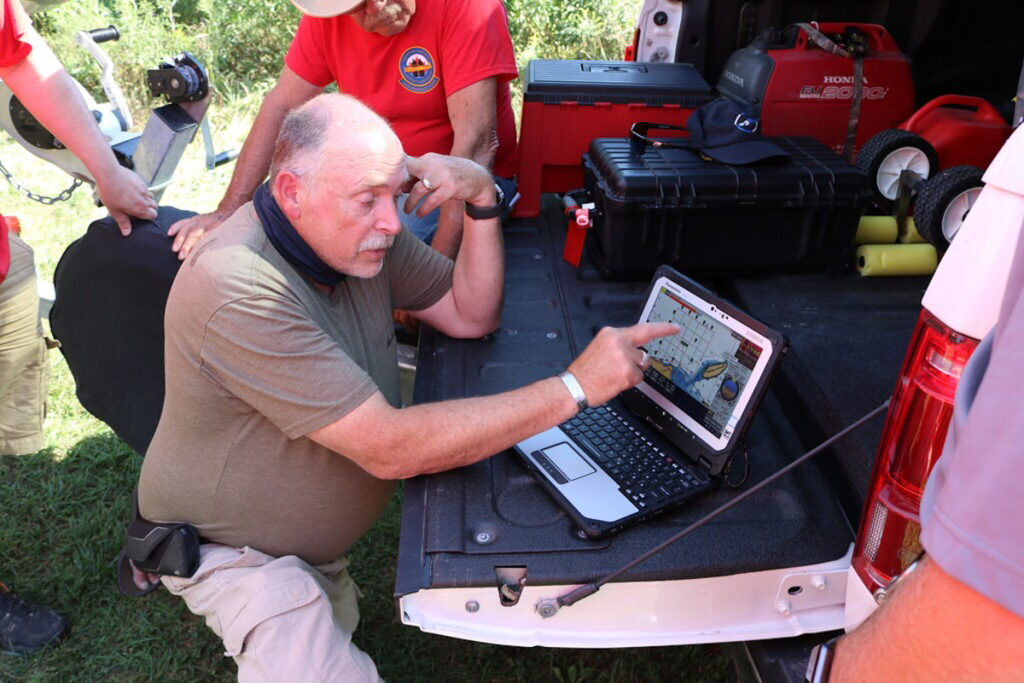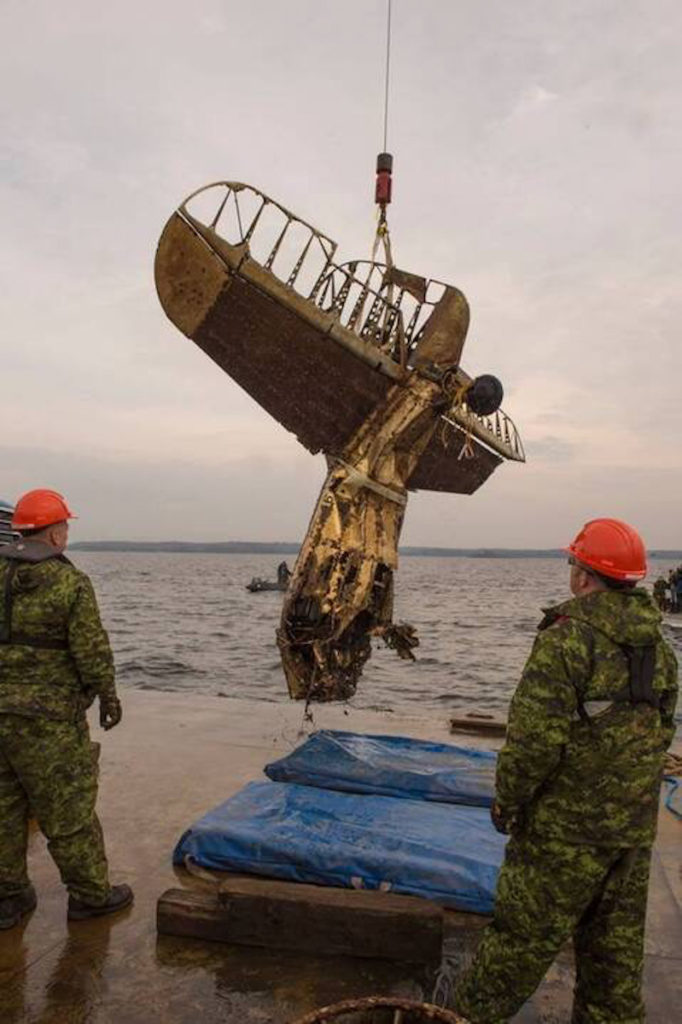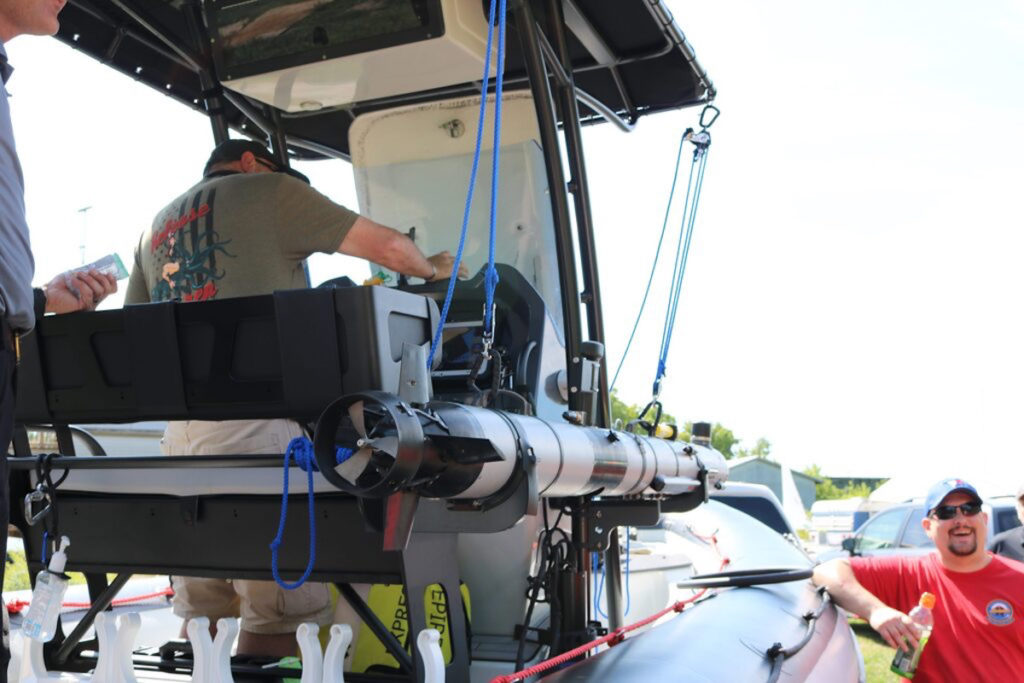Fisherman Earl Lobb and his two friends were working around their boats at South Bay in Milford, South of Picton Ontario, when, while watching the condensation trail of an aircraft, they noticed it begin a steep dive. The sun glinted off the polished aluminum surface of the P-51 Mustang as it hurled toward earth from an estimated 20,000 ft. The day was June 10 1952 and piloting the plane was Flying Officer Barry Allen Newman, 23 years of age, who had left Trenton in the V-12 powered fighter to conduct altitude tests.
The aircraft appeared to attempt to pull out of the dive at about 2,000 ft when the starboard wing broke off and the plane exploded in the air according to Lobb. It spun into the water, and a rescue boat was dispatched from No. 6 Repair Depot, CFB Trenton. All that was found was some bits of wood, rubber and an oxygen bottle for breathing at high altitude. It was empty. The remains of F/O Newman and much of his plane have never been found.The wreckage sits on the bottom of Lake Ontario at an assumed depth of about 80ft.
In 2020, after much research had been undertaken by The Canadian Harvard Aircraft Association Recovery Team, (a group consisting of Sonar and Search experts, Pilots, Historians and Divers who have been trained in Nautical Archeology) CHAA – Recovery Team leader Walther Irie obtained official permission from the Federal & Provincial Governments, to search for Flying Officer Newman and his aircraft. The search project is spearheaded by long-time CHAA-Recovery member Bil Thuma who has found lost aircraft all over the world including, along with Sonar expert Ken MacMillan, a rare WWII Northrop Nomad aircraft in Lake Muskoka which was recovered by Canadian Forces Divers in 2014. and a 1930s Fokker Standard Universal Aircraft in Manitoba in July 2005, “The Ghost Of Charron Lake”.
Bill is probably best known for the discovery of the “Lost Squadron”, a flight of B-17 bombers and P-38 fighters under 167 ft of ice on Greenland, that went down during WWII on a ferry flight to Europe, using ground-penetrating radar. An integral part of the search for Newman and the Mustang is Shark Marine of St. Catherines, who have brought in a sophisticated AUV aka an Autonomous Underwater Vehicle, basically a robot submarine that resembles a small torpedo launched from their boat, and acting like a sniffer dog sent into the woods, then conducts a grid pattern search using it’s onboard side scan sonar to record images from the bottom of the Lake, which are then reviewed to determine which objects, likely covered in zebra mussels, would resemble what would be the largest intact part of the wreck, the Packard-Built Rolls Royce V-12 engine which weighs 1,500 lbs. Whereupon a camera-equipped remotely operated vehicle (ROV) or a Diver would descend to investigate.
Walther Irie, CHAA – Recovery Team leader, has stated to the press, that he hopes that locating the remains of this aircraft and evidence of it’s pilot, (upon which proper government authorities will be notified for recovery), will bring closure to the family of Flying Officer Newman.
Although time and equipment has been donated and some of the search areas has been covered, the team has started a gofundmecampaign bit.ly/BarryNewman in order to cover fuel costs and direct expenses.
Thanks to Mike McAllister of the Canadian Harvard Aircraft Association Recovery Team (CHAA) for his contribution of this article and photos.










